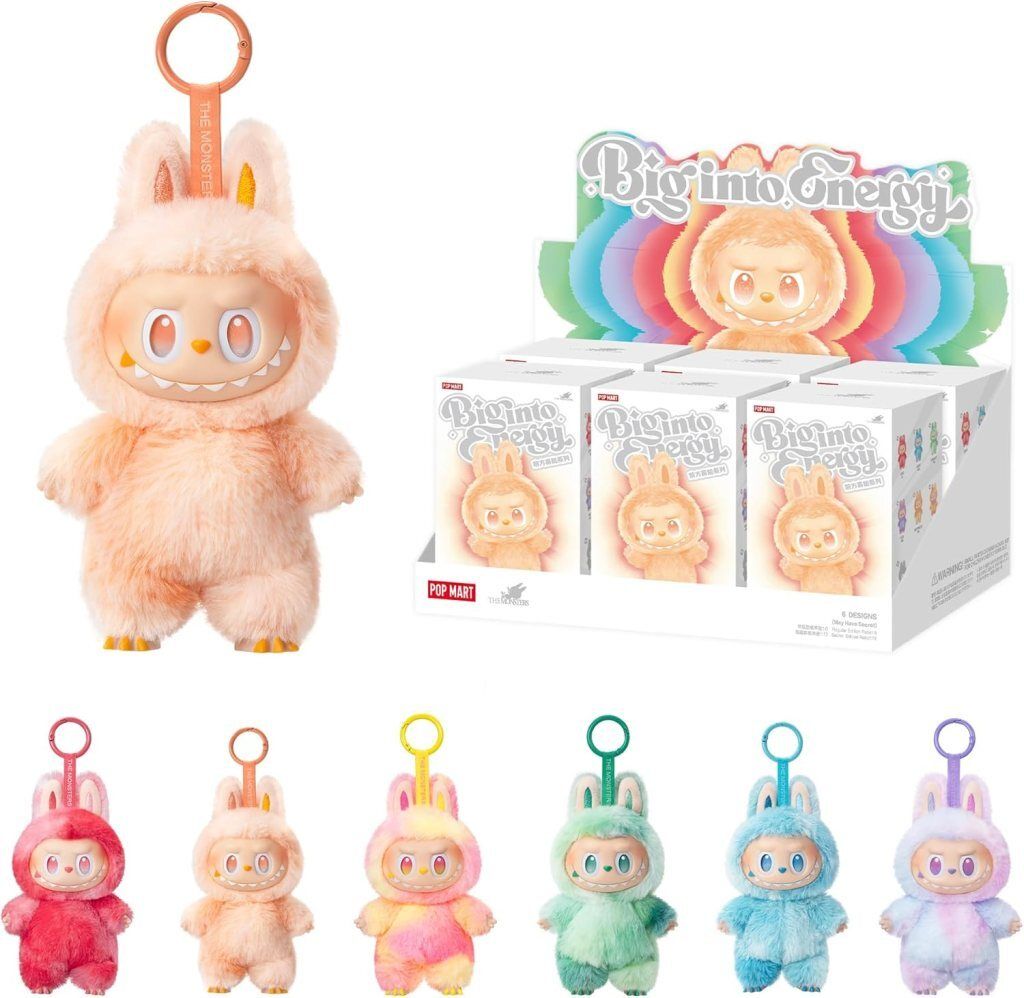- Ark's Newsletter
- Posts
- Why Everyone’s Hunting This $30 Toy: Inside Labubu’s Viral Takeover and Pop Mart’s Global Playbook
Why Everyone’s Hunting This $30 Toy: Inside Labubu’s Viral Takeover and Pop Mart’s Global Playbook
Unboxing videos, sold-out shelves, and cross-border toy hunts—discover how Pop Mart turned Labubu into a cult sensation and a global cash cow.

The Rise of Laboo: How This Plush Dolls Generated $423 Million for PopMart in 2024
In the world of collectibles, a peculiar toy monster named Laboo has taken the market by storm, becoming both a fashion accessory and a highly sought-after collectible. Produced by Chinese toy company PopMart, Laboo dolls generated an impressive $423 million in revenue in 2024, marking a staggering 729% increase from the previous year. This explosive growth has propelled Pop Mart to new heights, with its market cap soaring to $43.3 billion in 2025, dwarfing toy industry giants like Hasbro ($10.6 billion) and Mattel ($6.4 billion).
The Birth of a Pop Culture Phenomenon
Pop Mart, founded in Beijing in 2010 as a pop culture variety shop, began its journey into original characters in 2016 when CEO Wang Ning decided to collaborate with independent artists. Following an online survey, the company introduced its first major character, Molly, created by artist Kenny Wong. In 2019, Laboo joined the lineup, designed by artist Kasing Lung as part of The Monsters Trilogy picture book series. These characters, part of a group called the Monsters, are known for their unique backstories and cultural influences, resonating with collectors worldwide.
Laboos are primarily sold through “blind boxes,” a concept akin to trading cards where buyers don’t know which figure they’ll get until they open the box. Priced at around $30 each, these boxes offer a chance to receive one of seven figures, including a rare “secret” variant, fueling an addictive collecting experience. The allure of the unknown has driven fans to spend heavily, with some admitting to spending hundreds or even thousands of dollars on their collections. A life-sized Laboo doll even fetched over $170,000 at a Beijing auction in June 2025, highlighting the frenzy surrounding these toys.

The Laboo craze owes much of its success to social media and celebrity endorsements. Lisa from the K-pop group Blackpink played a pivotal role in skyrocketing Laboo’s popularity overseas, with her influence helping the brand gain traction in North America, Europe, and beyond. Social media platforms have amplified the excitement, with collectors sharing unboxing videos and showcasing their rare finds, creating a self-sustaining hype cycle. As one fan put it, “They’re ugly, but they’re cute, and I need them. I don’t know why I need them, but I do.”
PopMart’s Business Boom
Pop Mart’s strategic focus on artist collaborations and high-quality designs has set it apart from competitors. The company went public on the Hong Kong Stock Exchange in 2020 with a $6.9 billion valuation, and by 2025, its share price had surged 190%, making CEO Wang Ning the 10th richest man in China. The Monsters, including Laboo, accounted for 23% of PopMart’s $1.8 billion revenue in 2024, with a profit margin of 25%. The company’s expansion into international markets has been rapid, with North American sales, though only 6% of total revenue in 2024, surpassing the entire year’s U.S. revenue in just the first quarter of 2025.
PopMart operates through online platforms, brick-and-mortar stores, and innovative “robo shops” (vending machines) across five continents. Its first U.S. store opened in 2022, capitalizing on growing excitement in the market. The company’s commitment to diversity in its artist portfolio and character designs ensures broad appeal, inviting collectors of all backgrounds to engage with its products.
The Risks and Challenges Ahead
Despite its success, PopMart faces challenges. The limited supply of Laboos has led to intense competition among collectors, with reports of brawls in the UK prompting the company to temporarily pull the toys from shelves. A knockoff market selling counterfeit Laboos, dubbed “Lefufus,” poses another threat, offering lower-cost alternatives that may deceive unaware buyers. Additionally, a call for stricter regulations on blind box toys in China caused Pop Mart’s share price to drop by more than 10% in the week leading up to June 19, 2025.
The fast-paced nature of social media trends also presents a risk. While PopMart has capitalized on viral marketing, maintaining consumer interest in an ever-changing digital landscape will require continued innovation. However, the company’s 15-year track record and focus on diversifying its artist collaborations and product offerings suggest it is well-positioned for longevity.
A Bright Future for Laboo
Pop Mart’s Labubu phenomenon is more than a passing trend—it’s a testament to the power of creative collaboration, strategic branding, and the allure of collectibles. By fostering a sense of community among fans and leveraging the excitement of blind boxes, Pop Mart has created a global craze that shows no signs of slowing down. As the company continues to expand internationally and innovate within the toy industry, Laboo and its fellow Monsters are poised to keep lighting up passions and bringing joy to collectors for years to come.

Social Media and Celebrity Influence